Search Results for 'Central Hospital'
8 results found.
Memories of Shantalla Place
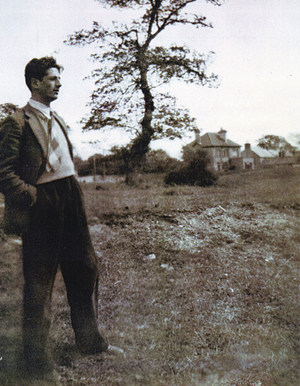
Shantalla Place was a little development of 23 houses which were built by a man named Birmingham, Nos 1 to 6 are on the Rahoon Road, and Nos 7 to 23 form a terrace just off that road. Originally, it was called Birmingham Terrace, later Sycamore Drive, before they finally settled on Shantalla Place. Mothers on this terrace used to warn their children not ‘to go down to the scheme’ when the rest of Shantalla was being built.
The Gunna Mórs
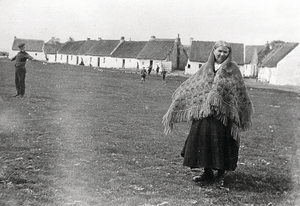
This area of the Claddagh was known as ‘the Big Grass’ or ‘the Green Grass’. It was the one open space of ground in the village and faced what is known as the Swamp today. It was very marshy, though some of it was used as a playground by local children, and it was also where the Claddagh Races took place.
The Central Hospital
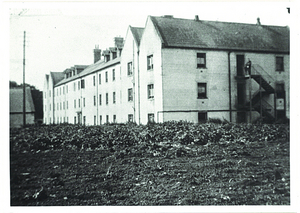
“The newly constituted County Hospitals and Dispensary Committee met for the first time on the 25th of February, 1922, in the boardroom of the old gate lodge of the old workhouse to organise the transfer of the Galway Hospital (Infirmary) on Prospect Hill to the workhouse site.” The hospital (which was where the county council buildings are today) had come under the control of the county council the previous year and it wisely decided that it should be closed and the workhouse developed as a central hospital to serve city and county. The Prospect Hill unit was phased out and ultimately closed in December 1924.
The Knights of Malta in Galway
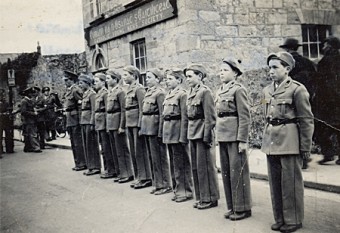
The first unit of the Order of Malta in Galway began in 1937 when Dr Conor O’Malley was asked by the Marquis McSweeney, the then chancellor of the Irish Association, to recruit members to form an ambulance corps aimed initially at Connacht only.
A procession on O’Brien’s Bridge
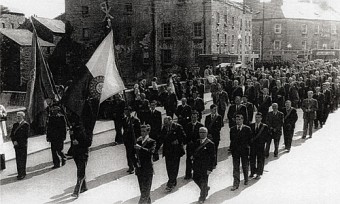
Our photograph today is of a group from the Sodality in the Jes being led by Bobby Molloy with the IHS flag. They are crossing O’Brien’s Bridge as part of the annual Procession of the Most Blessed Sacrament. Willy Forken is in front of the right hand row, and among the others are Johnny Holland and Johnny Whelan.
The County Buildings
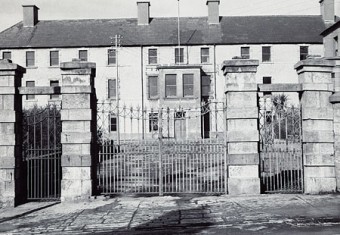
In June 1802, the County Infirmary finally opened. Some 35 years before, it was ordered in council at a meeting of the corporation, “That a committee consisting of the principal gentlemen of the town, be, and are accordingly appointed to enquire and find out a proper place within the county of the town of Galway for erecting a public infirmary or hospital for the reception of the poor, sick and disabled persons”. The Governors of the Erasmus Smith School granted two acres of ground gratis for ever, but it still took 35 years to build.
Galway Workhouse
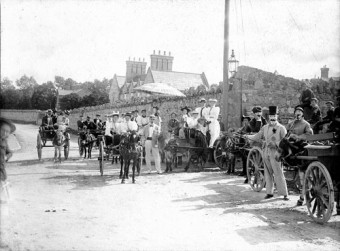
The ‘Night of The Big Wind’ on the night of January 6/7, 1839, deprived thousands of people in the Galway area of their homes. Their situation in the depths of winter was more than local charities could cope with. On May 8, the Galway Union was proclaimed to include the city and surrounding townlands to a radius of roughly 10 miles plus the Aran Islands, all of which would be served by a single workhouse in Galway. The first meeting of the Galway Board of Guardians was held in the Courthouse on July 3 of that year.
The Order of Malta in Galway
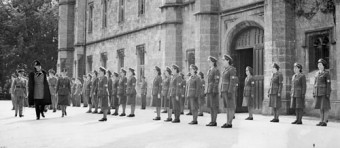
The Order of Malta was founded in the 12th century in Jerusalem to care for Christian pilgrims in the Holy Land and along pilgrimage routes through Christian Europe. Subsequently they were known as the Knights Hospitallers and when they came to Ireland they maintained hospitals for the sick, the poor, and the needy, and hostels for the use of travellers. The order is involved in many charitable activities, the most important being the administration of the Order of Malta Ambulance Corps.

